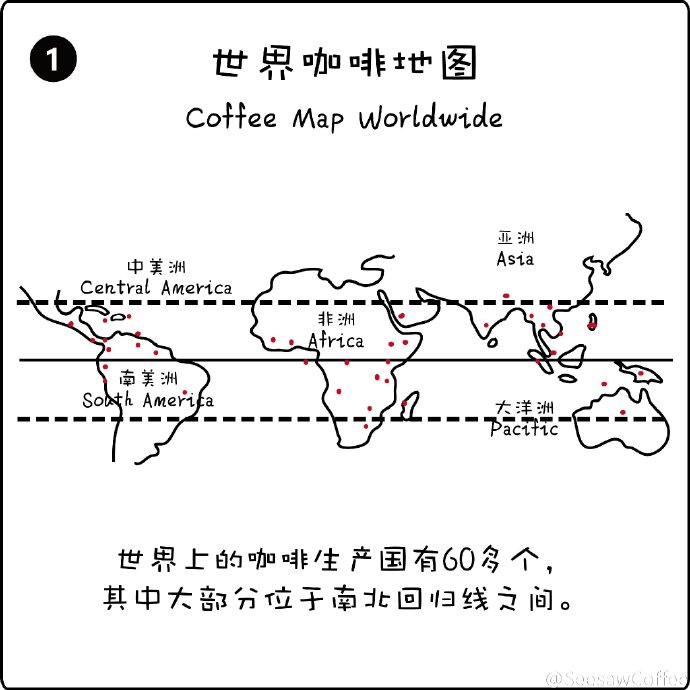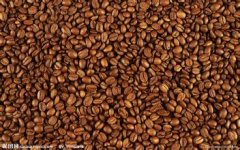Monsoon Malabar coffee has a heavy texture and a faint bitter taste, as well as a weak sour taste.
In BC, raw coffee beans produced in India entered England through the Suez Canal in Egypt. At that time, Indian coffee raw beans were loaded on the floor of the cargo warehouse of the cargo ship. due to the long sailing time of the ship, the raw beans fermented naturally in the cargo warehouse with high temperature and humidity. After arriving in Europe, fermented Indian coffee beans are consumed by Europeans who cannot recognize the difference. Later, Europeans fell in love with the fermented, sweet raw beans, and although the transportation industry was developed, many people were still looking for fermented coffee beans from India.
Indian Monsoon Malabar AA Coffee | Indian MonsoonedMalabar AA
Monsoon Malabar coffee has a heavy texture and a faint bitter taste, as well as a weak sour taste. After the monsoon process, the raw coffee beans are exposed to the wet monsoon, and the raw beans swell, full of faint bitterness and fermented aroma. This monsoon process changes the color of raw beans to a deep golden yellow and is rich in nutty aromas. Indian monsoon coffee is popular with exotic roasters and is often used in mixed production recently.
Flavor characteristics: Aroma | Flavor | Acidity | Sweetness | Body | Aftertaste Roasting Point: Light | Cinamon | Medium | High | City | Fullcity | French | Italian Variety: Kent ProcessingMethod: Washed Species: Arabica Aroma: Nutty, Caramel, Low-acidity, DarkChocolate
Summary: countries located in South Asia
Capital: new Delhi (New Delhi)
Language: 45% Hindi, 8% Bengali
Climate: tropical monsoon climate
Religion: Hinduism 80.5%, Islam 13.4%, Christianity 2.3%
Population: about 1,148 million (2008)
Production area: Malabar, Karnataka, MysoreTH, Keraka, Tamilnadu, Travancore
Production varieties: Kent, Cauwery, San Ramom
Harvest time: November ∼ February
Planting height: 1000m ∼ 1600m
Grade: a, AA
Processing method: Wet-processed
Features: Full Body,Low-Acidity, Musty, Pungent

Important Notice :
前街咖啡 FrontStreet Coffee has moved to new addredd:
FrontStreet Coffee Address: 315,Donghua East Road,GuangZhou
Tel:020 38364473
- Prev

Introduction of high-quality Honduran coffee beans
The extra-hard coffee beans here are full-grained, delicious and balanced, and the coffee made with them is pure and rich. Guatemala coffee once enjoyed a reputation as the best quality coffee in the world, but its quality also declined for a time. What is gratifying, however, is that its reputation is gradually being restored. In 1750, Father Jesuit introduced coffee trees to Guatemala, at the end of the 19th century.
- Next

Fine Honduran coffee tastes delicious the price of Honduran coffee
Overall, Honduran coffee has a good reputation and is suitable for mixed coffee. Coffee in Honduras is imported from El Salvador. Honduras produces high-acid high-quality coffee. Like other places, the coffee grade in Honduras depends on altitude: coffee grown at 700 to 1000 meters above sea level is medium, and grown at 1000 to 1500 meters above sea level
Related
- Does Rose Summer choose Blue, Green or Red? Detailed explanation of Rose Summer Coffee plots and Classification in Panamanian Jade Manor
- What is the difference between the origin, producing area, processing plant, cooperative and manor of coffee beans?
- How fine does the espresso powder fit? how to grind the espresso?
- Sca coffee roasting degree color card coffee roasting degree 8 roasting color values what do you mean?
- The practice of lattes: how to make lattes at home
- Introduction to Indonesian Fine Coffee beans-- Java Coffee producing area of Indonesian Arabica Coffee
- How much will the flavor of light and medium roasted rose summer be expressed? What baking level is rose summer suitable for?
- Introduction to the characteristics of washing, sun-drying or wet-planing coffee commonly used in Mantenin, Indonesia
- Price characteristics of Arabica Coffee Bean Starbucks introduction to Manning Coffee Bean Taste producing area Variety Manor
- What is the authentic Yega flavor? What are the flavor characteristics of the really excellent Yejasuffi coffee beans?

